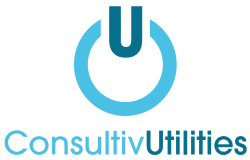
As environmental responsibility and energy efficiency has moved to the top of the global agenda, the UK government has put measures in place to ensure that organisations are doing their part. One such measure is the Energy Savings Opportunity Scheme (ESOS) – a mandatory programme that applies to large UK companies with high turnovers and headcounts.
Moving towards greater sustainability is a responsibility that every modern business should take seriously. As the effects of climate change become apparent there is no longer an excuse for organisations to simply ignore an issue that will impact us all over the coming decades.
Under ESOS guidelines, businesses must track and report all of their energy usage and find cost-effective ways to cut down their consumption.
ESOS runs in four-year phases, with phase 3 currently in full swing. The deadline of 5th December 2023 is fast approaching, and the countdown to compliance has begun, so here’s everything you need to know about the latest ESOS phase.
Do you qualify for ESOS phase 3?
The Energy Savings Opportunity Scheme applies to organisations across both the UK and from overseas. It applies to companies that meet certain criteria by a qualification date of 31st December 2022.
In order to qualify for an ESOS assessment, businesses must meet certain criteria. These include having:
- More than 250 employees in the UK; or
- A turnover exceeding £44.1 million and a balance sheet exceeding £37.9 million
Whole corporate groups will also qualify providing that at least one UK group company meets the necessary measures. You’ll also likely need to participate in ESOS phase 3 if you took part in the two previous phases.
How is phase 3 different?
As we move into phase 3 of ESOS, the ‘de minimis’ threshold for ESOS has been reduced from 10% to 5%. In other words, businesses now need to ensure that 95% of their total energy consumption is covered by an appropriate ESOS energy audit in order to be compliant.
You won’t be able to simply rehash past ESOS energy audits for phase 3 either. The Environment Agency has stipulated that they expect different and progressive energy audits, rather than tick-box approaches to compliance.
What do you need to do?
Calculate your energy consumption
Measuring all energy use across your premises, industrial processes and fleet is an essential factor in ESOS. Energy under ESOS is defined as combustible fuels, renewable energy, heat, electricity and transport fuel.
Identify your key energy areas
You must pinpoint the areas of significant energy consumption in your business, accounting for at least 95% of your overall energy usage. Up to 5% of your energy consumption can be classed as ‘de minimis’ and omitted from your report. Once you’ve identified the highest areas for consumption, you’ll need to audit them against minimum government requirements.
Create a compliance plan
Use the results of your audit to identify energy-saving opportunities, finding practical ways to minimise waste and improve energy efficiency.
Review your report
Once your report has been completed, you’ll need to have it reviewed by a lead assessor who can then sign off your final ESOS assessment.
Notify the Environment Agency
Having completed your ESOS assessment, you’ll need to submit your notification of compliance to the Environment Agency.
Keep accurate records of compliance
As part of ESOS, you’re expected to maintain records of how you’ve complied with guidelines in an evidence pack.
Seek ESOS Phase 3 support from Consultiv Utilities
Navigating the journey to ESOS compliance can feel like a mammoth task, but our expertise can help you make sense of the criteria and meet it without headaches and hardships. We’ve helped many organisations improve their energy management techniques in order to save money, meet sustainability goals, and achieve compliance to necessary guidelines, including ESOS.
Reach out to a member of our team today and find out how we can help you. Get in touch with the team at Consultiv Utilities.
Categories:
